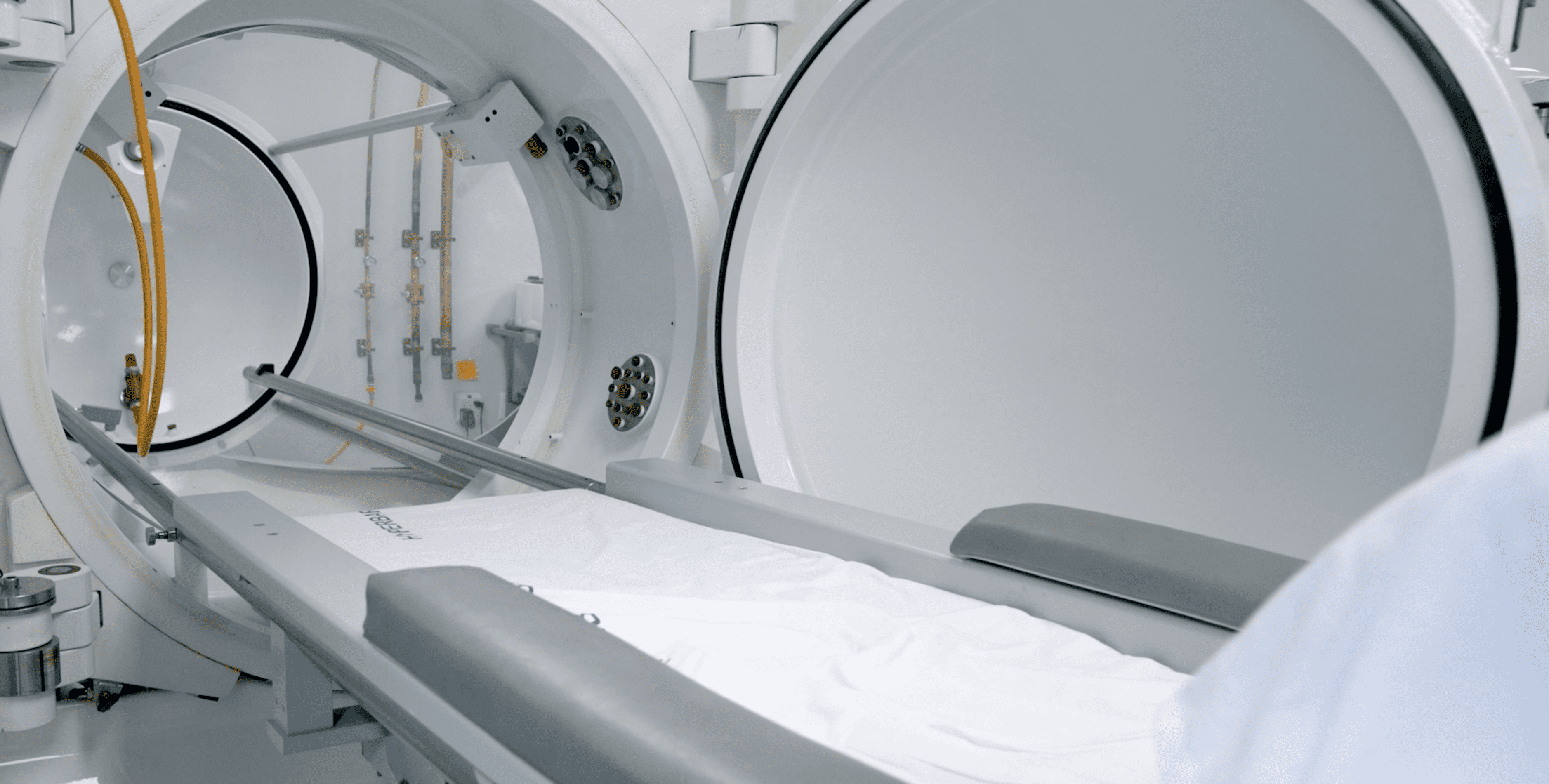For more than 40 years, Hyperbaric Oxygen Therapy (HBOT) has been a go-to solution for a variety of health issues. Vascular surgeons, as well as other Healthcare Providers, use it in the treatment of non-healing wounds – chronic wounds that last 8 weeks or more.
If you’re wondering whether HBOT is right for you, read on – Maryland Vascular Specialists and their HBOT partner, MVS Woundcare & Hyperbarics, want patients with non-healing wounds to be fully informed about Hyperbaric Oxygen Therapy before making a decision with their doctor about the best course of treatment.
What is HBOT?
HBOT involves treating the body with 100% oxygen at a pressure that is greater than the surrounding atmospheric pressure. The pressure moves oxygen through the body and its tissues. After Hyperbaric Oxygen Therapy treatment, the oxygenation in the cells can improve significantly. A healing environment is created by forming new vessels, fighting infections, and healing damaged tissue.
For non-healing wounds, Hyperbaric Oxygen Therapy is used to prevent infection and promote healing. It’s not a magic cure, and gaps still exist in our understanding of non-healing wounds, but it can be an important tool to help with treatment.
Only certified doctors and technicians should apply Hyperbaric Oxygen Therapy. During the procedure, the patient should be monitored carefully to ensure the therapy is working correctly without undesirable complications like breathing difficulty, fainting, ear pain, seizures, or changes in heart rate and blood pressure.
How Well Does HBOT Work?
In clinical trials, HBOT has shown some great results. That’s because a major contributor to the problems of non-healing wounds includes, inflammation, infection, and/or lack of oxygen in the tissues. The treatment helps in improving or reversing these underlying contributing factors.
However, some doctors are skeptical about Hyperbaric Oxygen Therapy. There is always a risk of oxygen toxicity from the treatment. In addition, some studies in the 1930s to 1960s produced unclear results about whether or not it was effective.
Adding to the debate, there were two prominent studies in 2008 and 2012 that provided directly contradicting evidence about the effectiveness of the treatment. The 2008 study concluded that it simply delayed the need to amputate limbs in diabetic patients; the 2012 study saw a 59% decrease in wound area from HBOT compared to the control group at 26%.
Hyperbaric Oxygen Therapy has been in the headlines a lot lately because many patients see a significant improvement after the treatment. Although measurements of the outcome can vary from patient to patient, most HBOT centres see marked improvements.
While some doctors criticize it for merely delaying amputation and not healing wounds, others see this as a significant benefit. If you can delay amputation by months or years and heal your wound, isn’t that worth it for a better quality of life?
Facts about HBOT
Because there are many myths and misconceptions about Hyperbaric Oxygen Therapy, here are some HBOT facts from Johns Hopkins Medicine.
- Oxygen therapy was first used in the early 20th century to treat people with influenza.
- Today, it is considered an effective treatment for non-healing wounds and wound-related issues like gangrene, ulcers, and infections.
- During HBOT, you breathe in pure oxygen at a pressure that is about 1.5 to 3 times higher than average.
- It’s the same treatment that is given to scuba divers who have “the bends” and firefighters who are poisoned while battling fires.
- Not only does HBOT support the healing of chronic wounds, but it also strengthens your immune system. The treatments disable toxins, flush out the infection, and allow white blood cells to do work.
Making a Decision about HBOT
If you have a non-healing wound, you may be wondering if Hyperbaric Oxygen Therapy is the right kind of treatment. The prevailing wisdom is that you must work in tandem with your doctor to determine the proper course of treatment. There are many effective treatments for non-healing wounds that should be attempted for HBOT is employed.
The decision should be made primarily based on the type of wound you have, your overall health picture, and any other conditions or medications that might interfere with its effectiveness. A Wound Care Specialist, including a vascular surgeon, can guide you through understanding these issues.
Modern treatments for non-healing wounds show great promise, and that includes, among other things, Hyperbaric Oxygen Therapy. To learn more, connect with the experts at Maryland Vascular Specialists and, if HBOT is indicated, we will refer for treatment to our partner MVS Woundcare & Hyperbarics.
